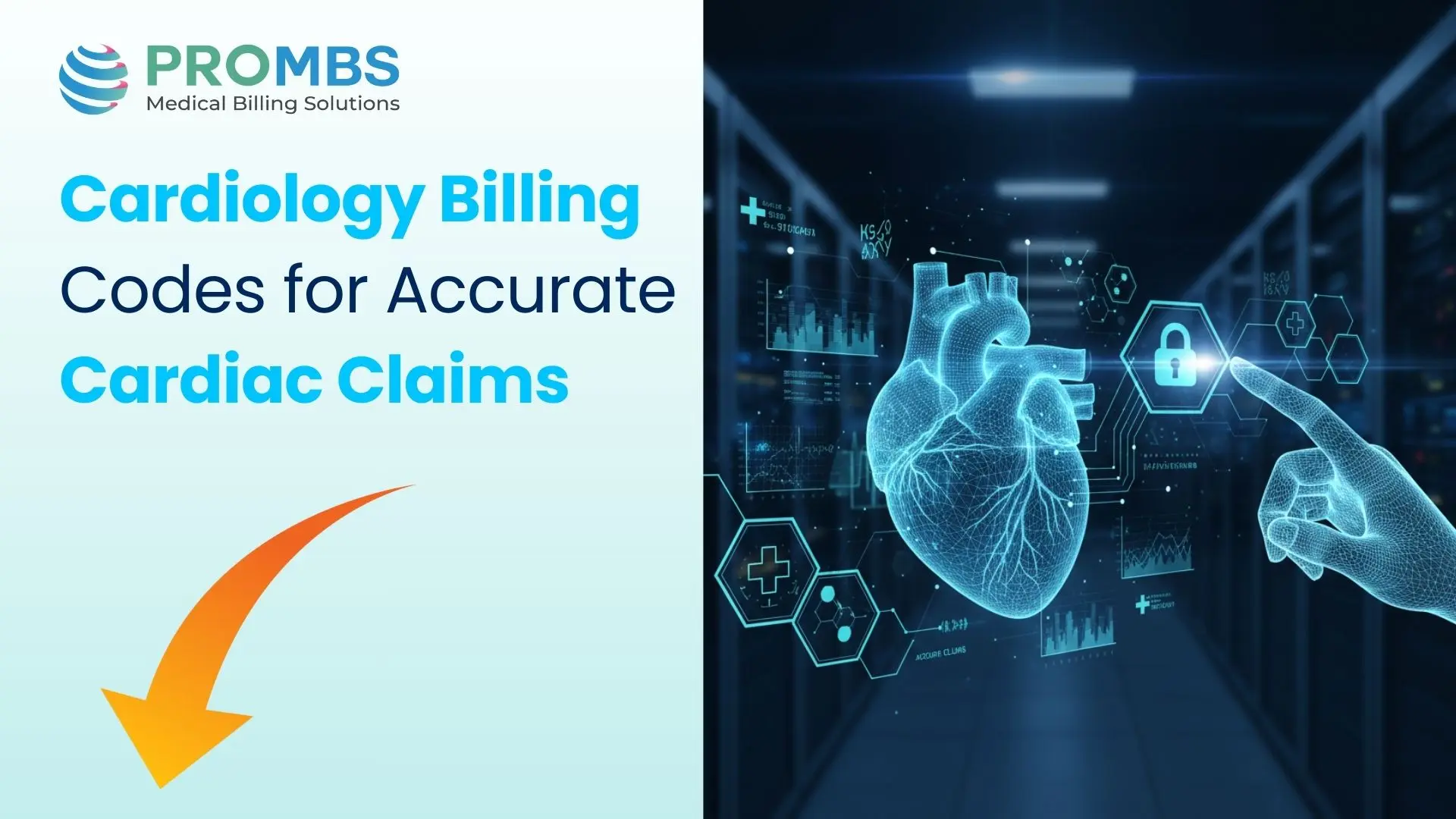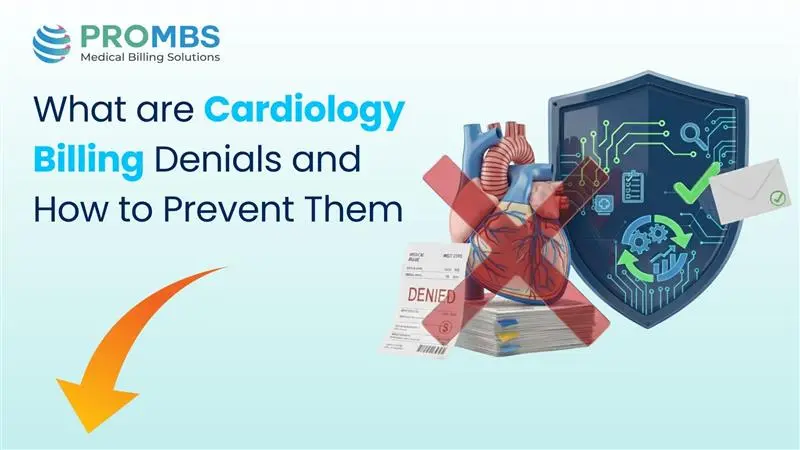Cardiology Billing Service teams face echo confusion every day. What is the best way to pick the right echo code when notes shift from one provider to the next? How did a missing Doppler line become a full denial?
Why do payers question echo claims that look complete at first glance? These questions follow every busy heart clinic. Echo rules look simple on paper, yet real work tells a different story.
A tight workflow helps, but even strong teams struggle with echo coding. The pressure rises when AMA and CMS audits hit. They want proof. They want clarity. They want every detail spelled out.
This guide shows how CPT 93306 and CPT 93307 differ. Why so many denials happen? And how a strong Cardiology Billing Service keeps echo claims clean, steady, and paid fast.
Why Does Echo Billing Confuse Every Cardiology Billing Service?
Echo billing confuses even skilled staff. Why does it feel so tricky? First, the terms overlap. Second, different payers read the rules in different ways. Third, many echo reports lack tiny lines that matter more than you think.
A tech may assume flow data is obvious. A reader may skip a phrase because it feels redundant. Yet CMS auditors want every detail written. AMA coding rules expect clear proof of each echo element. If one line goes missing, the claim becomes a target.
Many clinics ask the same question. How did this claim fail when the test was done right? The answer almost always sits inside the notes. That is why so many providers turn to a trained Cardiology Billing Service to protect their echo claims.
When Should a Clinic Use CPT 93307 for Echo Claims?
Echo coding looks simple, yet every cardiology practice knows the reality. Tiny documentation gaps trigger denials, audits, and payment delays. The confusion often comes down to two deceptively similar codes: CPT 93306 and CPT 93307.
But why do denials for this code remain so common? One reason: missing Doppler proof. A good Cardiology Billing Service checks each part before billing. AMA requires full Doppler detail. CMS wants medical needs tied to symptoms. If the report lacks proof, the claim fails.
What is the best way to protect CPT 93306? Make sure the report shows every echo element. Show the views. Show the Doppler. Show the color flow. Link those findings to the reason for the test.
Clinics often say, “How did I lose a full echo claim?” And the answer is clear. Missing Doppler language. That is why a well-trained Cardiology Billing Service reviews every line.
When Is CPT 93307 the Right Code for a Simple Echo Study?
CPT 93307 covers structure only. It shows heart shape. It shows chamber size. It does not check flow, speed, or valve motion. It works for follow-up cases or simple size reviews. Because it is a lighter study, pay is lower.
But here is the key question: Why do payers deny 2D-only claims? CMS auditors want clear proof that Doppler was not required. If that point is missing, the payer assumes the study is incomplete.
A strong Cardiology Billing Service protects 93307 by checking one thing: a clear line that states why Doppler was not needed. Without that line, the claim sits at risk.
Many clinics ask, “How did a simple echo bring so much trouble?” And the answer sits in the report: weak justification. A Cardiology Billing Service prevents that mistake.
How Do You Compare 93306 and 93307?
These two codes look similar until you see the key split. One gives a full story. One gives a partial one. A trained Cardiology Billing Service uses this table to coach staff and guide coding decisions.
| Feature | CPT 93306 | CPT 93307 |
|---|---|---|
| 2D Echo | Yes | Yes |
| Spectral Doppler | Yes | No |
| Color Flow Doppler | Yes | No |
| Diagnostic Depth | Full flow and valve review | Structure only |
| Reimbursement | Higher | Lower |
When Does CPT 93307 Fit the Echo Documentation Best?
What is the best way to stop echo denials? Clean notes that follow AMA and CMS expectations line by line. Echo reports must show medical need, technique, and findings. If even one piece falls out of place, the whole claim shakes.
It does not matter if the test was perfect. If the notes fail, the payer walks away. A strong Cardiology Billing Service knows this truth well. Echo coding is not just about picking a code.
It is about proving the study from start to finish. Auditors want a story. A clear one. A complete one. A story that shows why the test was done, how it was done, and what it revealed.
Medical Need
The report must state why the study was ordered. Chest pain. A new murmur. Sudden edema. Short breath. Anything that explains the reason for the scan. This line matters more than most people think. CMS reads it first. They use it to judge every claim that follows.
A Cardiology Billing Service checks this piece with care. They match the signs to the code. If the story feels thin, they catch it early. It is easier to fix a line in the report than to fight a denial months later.
Echo Elements
Interpretation
Findings must tie directly to the test. AMA wants the read to follow a clean path. What did the images show? What did the Doppler reveal? How do the findings explain the symptoms? The words do not need to be poetic. They only need to be clear and complete.
Clinics often ask, “How did I miss this?” It happens when templates lose detail over time. Or when a busy day pushes the reader to move fast. A Cardiology Billing Service fixes this by building structured templates. Checking every study. Ensuring compliance before it leaves the clinic.
How Can a Cardiology Billing Service Prevent Echo Denials?
Denials hit the same weak spots again and again. Missing Doppler notes. Wrong code choice. Weak need. Bad bundling. A strong Cardiology Billing Service stops these issues before claims go out.
Steps To Keep Echo Claims Clean
- Confirm Doppler use before picking CPT 93306.
- Match the order to the final read.
- Note why Doppler was not needed for CPT 93307.
- Add missing findings before submitting the claim.
- Use a pre-claim checklist for every echo.
A clinic that follows these steps sees fewer delays and faster pay. Many ask, “What is the best way to cut echo denials?” The truth is simple. Use a trained Cardiology Billing Service to guide every step.
Why Should Clinics Trust a Cardiology Billing Service Like Pro-MBS?
Pro-MBS stands as a trusted Cardiology Billing Service for heart groups that want clean echo claims. We review every echo one line at a time. We match codes to notes. We verify medical need. We correct issues long before a payer sees the claim.
Clinics ask us often, “How did we improve our clean-claim rate so fast?” The answer lies in our echo workflow. It includes detailed checks, clear templates, tight training, and audit-ready reports. A strong Cardiology Billing Service does not guess. It protects your revenue and gives your team peace of mind. With faster, cleaner, and steadier payments.
Frequently Asked Questions
What makes a Cardiology Billing Service essential for CPT 93306 vs 93307?
A Cardiology Billing Service understands how fast an echo claim can break when one Doppler detail goes missing. These Echocardiography Billing Codes look simple, yet each payer reads them in a different light. The right team catches gaps before they turn into denials. Clean claims feel rare today, but Pro-MBS brings calm, order, and speed back to echo billing.
How does a Cardiology Billing Service reduce echo denials?
Most denials hit weak notes. Missing Doppler. Thin medical need. Wrong code. A Cardiology Billing Service studies each echo line like a scout scanning a battlefield. They match findings to the right Cardiology CPT Codes and keep audits away from your door. Clinics that lean on Pro-MBS see fewer surprises and smoother payments.
Why do CPT 93306 claims fail even when the study looks complete?
CPT 93306 falls apart when documentation falls short. Missing flow lines break the story. Thin findings weaken the code. A Cardiology Billing Service checks every detail. Details that match the Echo Reimbursement Guidelines that auditors expect. With Pro-MBS guiding the review, full-study echoes stay clean, strong, and ready for payment.
When is CPT 93307 the safer choice for a Cardiology Billing Service?
CPT 93307 works when the study focuses on shape and size alone. No Doppler. No flow. No velocity checks. A Cardiology Billing Service looks for signs that support a simple structural review. They use Cardiac Imaging Billing logic to explain why Doppler wasn’t needed. Clinics that trust Pro-MBS avoid the denials tied to thin documentation.
What documents does a Cardiology Billing Service review before submitting an echo claim?
They check the reason for the test. They check the technique. They check the findings. Every piece must line up with the right Cardiology CPT Codes for the claim to survive payer review. A Cardiology Billing Service also checks Doppler elements for 93306 and structure-only notes for 93307. With Pro-MBS, clinics keep each echo report audit-ready.
How does a Cardiology Billing Service maintain compliance with Echo Reimbursement Guidelines?
Echo rules shift often and not always in the same direction. A Cardiology Billing Service follows these changes and molds them into daily workflow. They protect Echocardiography Billing Codes from risky shortcuts that trigger denials. With Pro-MBS watching each step, clinics stay ahead of shifting policies instead of reacting to them.
What is the strongest advantage of working with a Cardiology Billing Service like Pro-MBS?
A powerful Cardiology Billing Service turns echo confusion into steady, controlled billing. They understand the split between CPT 93306 vs 93307, catch problems early, and protect revenue before trouble starts. Clinics feel relief fast through fewer denials, faster payments, and better flow. With Pro-MBS, your echo billing finally works the way it should.
- You Might Also Like
- November 25, 2025Cardiology Billing Service Guide for CPT 93306 and 93307
- November 25, 2025Cardiology Billing Codes for Accurate Cardiac Claims
- November 24, 2025What are Cardiology Billing Denials and How to Prevent Them
- Leave a Reply


